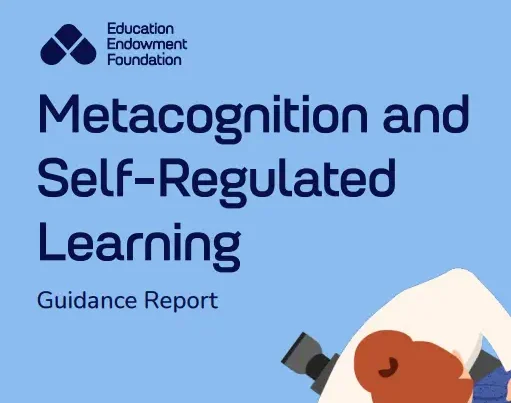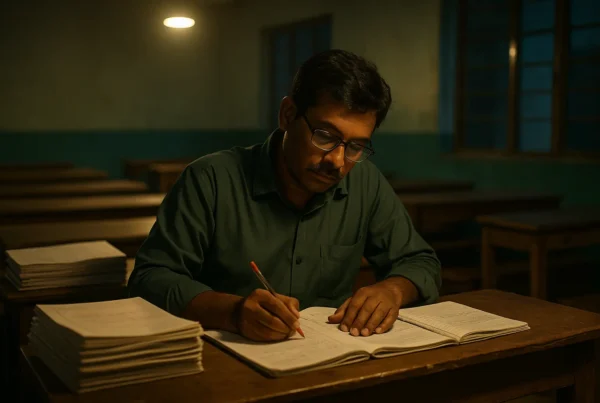Turning Mistakes into Moments of Learning
“Teacher, gravity only works when you drop something heavy. That’s why feathers float—they don’t count!”
It’s the kind of confident misconception that makes every teacher smile. We correct it, the class chuckles, and then we move on. But what if—rather than brushing past it—we treated that error as a golden teaching opportunity?
You may remember our earlier post, Fear of Failure in Bangladeshi Schools: What the Evidence Tells Us. In it, we explored how the culture of high-stakes exams and relentless parental expectations can make students terrified of getting things wrong. That fear of failure silences curiosity, shuts down discussion, and pressures teachers into “safe” teaching that prizes correct answers over real thinking.
This blog — Turning Mistakes into Moments of Learning — draws on a new systematic review published in the Educational Psychology Review (Dieterich, Rumann, & Rodemer, 2025), which examines how students learn from errors and under what conditions mistakes become powerful teaching tools. By reframing errors as opportunities rather than setbacks, we can boost understanding and gradually reshape classroom culture. When students see their mistakes being welcomed, analysed, and even celebrated, the fear of failure begins to lose its grip.
👉 For an even deeper dive into the research and practical classroom examples, listen to our podcast episode Turning Mistakes into Moments of Learning
What the Research Says
Researchers have studied two main approaches to teaching with mistakes:
- Erroneous Examples (ErEx): A worked-out solution with a deliberate mistake (e.g., a fictional student “forgot” to distribute the minus sign). Students are asked to spot and fix the error.
- Contrasting Erroneous Examples (ConErEx): The mistake is presented side-by-side with the correct solution, so students directly compare wrong vs. right.
Key findings:
- ConErEx is especially effective. In 9 out of 12 studies, contrasting examples helped students learn more than just showing the correct way.
- ErrEx can go deeper—but is riskier. They build “negative knowledge” (understanding why something is wrong), but without scaffolding they can overload weaker students.
- Benefits often show up later. Wrestling with mistakes can lead to stronger long-term memory gains, even if it looks messy in the moment.
The evidence is clear: errors aren’t distractions; they’re catalysts for deeper and more durable learning.
Why Teachers Should Care
For teachers in Bangladesh, this approach hits two birds with one stone:
- It builds understanding. Students don’t just copy correct answers; they learn to diagnose, explain, and avoid misconceptions.
- It changes classroom culture. Instead of fear and silence, mistakes become normalised. Students see errors as part of the process rather than evidence of weakness.
In a system where “getting it wrong” can feel shameful, this shift is profound. It tells students: You’re allowed to think aloud, to experiment, to risk being wrong. That’s how learning happens.
How to Do It: Practical Strategies
1. Use Contrasting Examples for Clarity
Write the wrong solution and the right solution side by side. Circle the key difference in red.
- Prompt: “Compare step three in both solutions. What’s different, and why does it matter?”
👉 Students see both the trap and the fix, which lowers anxiety: they know the correct answer is visible, so they can safely explore the wrong one.
2. Highlight Errors Explicitly
For weaker students, don’t make them “hunt” for the mistake. Mark it clearly with colour or a circle.
- Prompt: “This step is circled. Why is it wrong?”
👉 This reduces wasted effort and keeps the focus on the learning point, while also showing students that teachers expect and accept mistakes.
3. Match Prompts to Student Ability
- For stronger students: “Find the error and explain why it breaks yesterday’s rule.”
- For weaker students: “Here’s the error. Compare it with the correct example. What’s different?”
👉 Matching difficulty prevents overload. More importantly, it avoids reinforcing the fear that mistakes are a trap to humiliate students.
4. Give Explanatory Feedback
Don’t just mark answers wrong. Add a quick explanation:
- ❌ “Wrong.”
- ✅ “The minus sign wasn’t distributed to both terms. Both numbers inside the bracket need it.”
👉 This shifts feedback from judgement to teaching, helping students see that mistakes are not punishable offences but opportunities to understand the process.
5. Revisit Common Errors
Dedicate 2–3 minutes at the start of the next lesson:
“Yesterday many of us forgot to apply the negative sign. Why does that matter? Who can explain?”
👉 Revisiting mistakes shows students that errors are part of the ongoing conversation of learning, not something to be hidden or ignored.
A Classroom Example
You’re teaching algebra. You write these two solutions on the board:
Solution A (wrong):
[(x – 2)(x + 3) = x² + 6]
Solution B (right):
[(x – 2)(x + 3) = x² + x – 6]
You circle the +6 in red.
- To strong students: “Find the error and explain why it breaks the distributive rule.”
- To weaker students: “Look at the red step. Compare it with Solution B. What’s different, and why?”
Not only do students understand algebra better—they also see that mistakes are welcomed, explored, and respected. You’re modelling a culture where errors are part of the lesson, not something to fear.
Final Thought
In our blog on fear of failure, we argued that Bangladeshi classrooms too often punish mistakes, creating silent, anxious learners. By turning errors into teaching moments, we can flip that culture: from silence to dialogue, from shame to curiosity.
Mistakes are not obstacles—they’re opportunities. Used well, they can transform lessons from routine correction into powerful learning experiences.
So next time a student gets it wrong, resist the urge to “fix and move on.” Instead, ask yourself: Am I turning this mistake into a moment of learning—and into a classroom where students feel safe to try, risk, and grow?
If you found this useful, join the EBTD newsletter for monthly, research-backed tips, free classroom tools, and updates on our training in Bangladesh—no spam, just what helps. Sign up to the newsletter and please share this blog with colleagues or on your social channels so more teachers can benefit. Together we can improve outcomes and change lives.
📚 Reference
Dieterich, S., Rumann, S., & Rodemer, M. (2025). Conditions for effective learning from erroneous examples: A systematic review. Educational Psychology Review, 37, Article 94. https://doi.org/10.1007/s10648-025-10071-x





